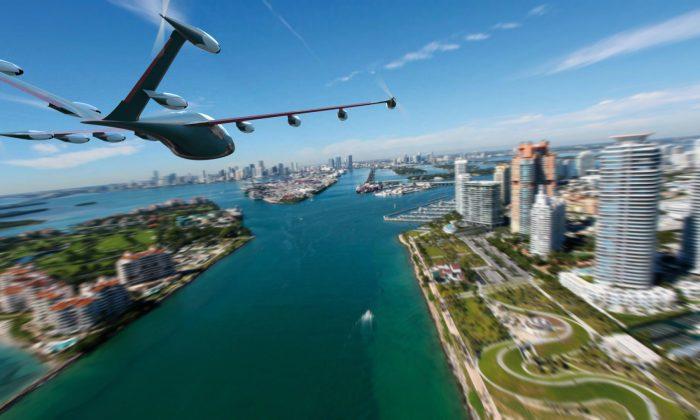Software engineers in Australia will have the opportunity to upgrade their qualifications and learn how to pilot unmanned cars.
The Royal Melbourn Institute of Technology (RMIT), Australia, in partnership with the California-based Udacity, will be offering a new nanodegree in futuristic next-generation self-driving cars, which will be an expansion of their existing transport technology courses.
The new course will be called “Flying Car And Autonomous Flight Engineer,” and it will run over four months with engineers learning skills like quad-rotor dynamics and 3D robot motion control.
The course will cost $2000 (US$1282), and the nano degree will be certified and credited by RMIT and Udacity, which have five years of experience in autonomous vehicle courses.
Nic Cola, the online chief executive of RMIT, told AAP that this course will give engineers the skills to explore a market that has big potential to take off.
“We know there’s a lot of investment going into that space in Australia and some good providers in that space.”
In addition to this course, there will be three other online courses at RMIT, which are deep learning, artificial intelligence and ethical hacking.
Preparing For Urban Air Mobility
The course is a result of forecasts that the flying taxis ’market will be worth $2.3 trillion by 2040, and in Australia, they are expected to arrive as early as 2026.However, U.S. investment company Morgan Stanley believes that the so-called urban air mobility industry will be valued even higher at $4.4 trillion.
In Australia, the buzz around flying cars came out in 2019 when Uber published the news that they will have flying rides by 2023 in Melbourne, but in 2020 they sold their stake in the market.
Sydney Seaplanes and Nautilus Aviation also announced recently that they are looking to join the club, with the former planning flights around the city and the latter promising flights above the Great Barrier Reef with vertical take-off-and-landing (VTOL) vehicles in 2026.
At Sydney’s Avalon Air Show, another company Pegasus International, based in Melbourne, also showed off their new VTOL aircraft, which has been earmarked for use by the Australian police force.
Matus Cvengros, an aeronautical engineer trained in Australia and Sweden and currently working in AMSL Aero, a Sydney-based air mobility company, said that this training opportunity is very important for the new industry.
What Are Nanodegrees
“Nanodegree“ is a term coined by Udacity to describe a specific type of online learning program that focuses on providing practical and job-ready skills in various fields of technology and business.The degrees have gained popularity due to their practical approach to learning and the ability to provide learners with tangible skills that are directly applicable to the job market.
Nanodegrees are designed to be relatively short and intensive, typically taking a few months to complete, making them accessible for individuals who want to quickly acquire new skills and enhance their career prospects.
Key features of the nanodegrees include:
What is Urban Air Mobility
Urban Air Mobility (UAM) refers to the concept of using advanced aerial vehicles, often including electric vertical take-off and landing (eVTOL) aircraft, to provide on-demand and efficient transportation solutions within urban and suburban environments.The concept of UAM dates back over a century ago (the early 1900s) and envisions a future where people and goods can be transported through the airspace above cities, reducing congestion on roads and potentially offering faster point-to-point travel.
Electric Propulsion
Many UAM vehicles are designed to be electrically powered, which can reduce emissions and noise pollution compared to traditional combustion engines.Vertical Take-off and Landing (VTOL)
UAM vehicles typically have the capability to take off and land vertically, allowing them to operate from confined spaces without the need for traditional runways.Autonomous Operations
UAM systems often incorporate autonomous or semi-autonomous technology to handle various aspects of flight, such as navigation, obstacle avoidance, and traffic management.On-Demand Services
Similar to ride-hailing services like Uber, for example, UAM aims to offer on-demand transportation, allowing passengers to request flights as needed.Point-to-Point Travel
UAM can potentially provide direct transportation between specific locations, reducing the need for multiple transit stops and transfers.Reduced Congestion
By utilizing the airspace, UAM has the potential to alleviate traffic congestion on roads, particularly in densely populated urban areas.Time Efficiency
UAM could significantly reduce travel times, especially for routes that are currently affected by traffic congestion.Challenges
In addition to the advantages, there are challenges with the UAM, particularly around safety, regulatory approval, noise levels, public acceptance, and integration with existing transportation systems.The vision for UAM aligns with the broader trend of advancing transportation technologies to create more efficient, sustainable, and convenient ways of moving people and goods within urban environments.







